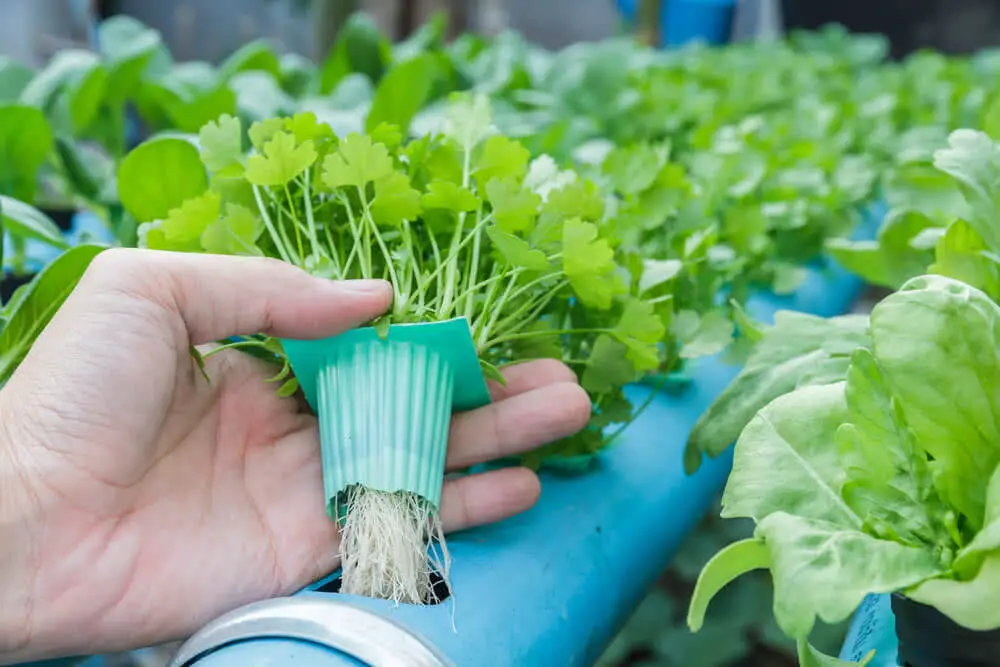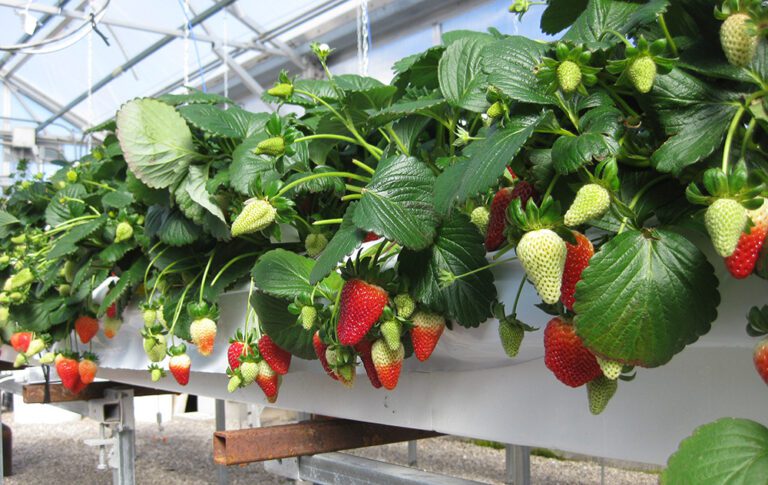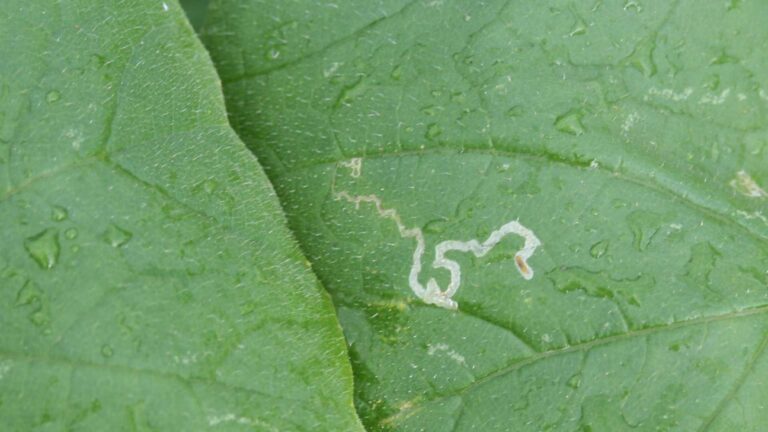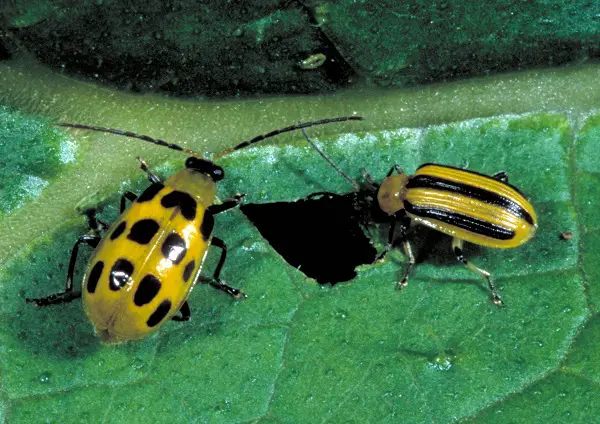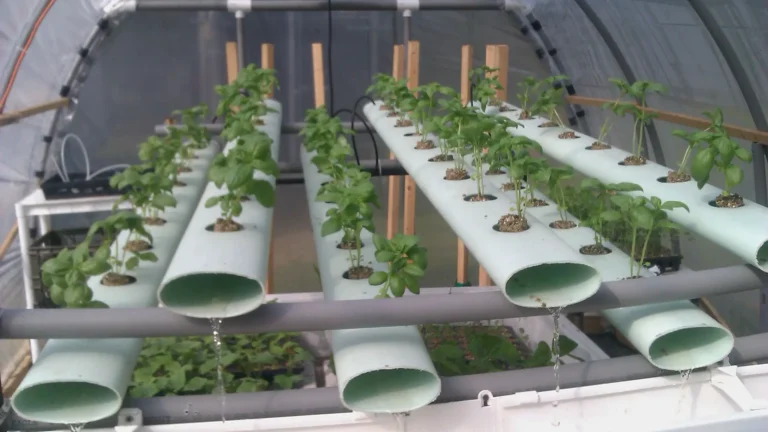Top 13 Hydroponic Plants for Beginners: A Growing Guide
“Curious about hydroponic gardening but not sure where to start? You’re in the right place! Whether you’re a seasoned green thumb or just dipping your toes into the world of growing your own food, hydroponics offers a unique and efficient way to cultivate plants. In this comprehensive guide, we’ll walk you through the top 13 hydroponic plants perfect for beginners. From leafy greens like lettuce and spinach to flavorful herbs like basil and cilantro, there’s something for everyone to enjoy. Get ready to discover the joys of soil-free gardening and unlock a world of fresh, homegrown produce right at your fingertips. Let’s dive in and start growing!”
Table of Contents
Understanding the Basics of Hydroponics
Hydroponics is a method of growing plants without soil, relying instead on a nutrient-rich water solution. With this technique, plants receive the necessary nutrients directly from the water, allowing for controlled and optimized growth. By eliminating the need for soil, hydroponics offers numerous advantages for gardeners, including efficient use of space and resources, faster plant growth, and reduced risk of pests and diseases.
:max_bytes(150000):strip_icc()/a-mesclun-mix-grows-at-two-guys-from-woodbridge--an-organic--hydroponic-greenhouse-in-hamden--connecticut--113221437-5c53c170c9e77c0001599b51.jpg)
- Nutrient Solution: Hydroponics relies on a nutrient-rich solution to nourish plants. This solution contains essential elements such as nitrogen (N), phosphorus (P), and potassium (K), along with trace minerals like iron (Fe), zinc (Zn), and magnesium (Mg).
- pH Management: Maintaining the correct pH level of the nutrient solution is crucial. Most plants thrive in a pH range of 5.5 to 6.5. Regular monitoring and adjustments ensure optimal nutrient uptake.
- Growing Medium: Unlike soil-based gardening, hydroponic doesn’t use soil. Instead, plants grow in inert substrates like perlite, coconut coir, or rock wool. These provide stability and support while allowing roots to access nutrients and oxygen.
- Water and Oxygen: Hydroponic systems deliver water and oxygen directly to the roots. Proper aeration prevents root rot and encourages healthy growth.
- Lighting: High-quality artificial lighting (such as LED or fluorescent) is essential for photosynthesis. Plants need specific light wavelengths (blue and red) for growth.
- Temperature Control: Maintain an optimal temperature range (usually 65°F to 75°F) to support plant metabolism. Cooler temperatures promote root health.
- Types of Hydroponic Systems: There are various hydroponic setups, including nutrient film technique (NFT), deep water culture (DWC), and aeroponics. Each has its advantages and challenges.
- Pest Management: Since hydroponics eliminates soil-borne pests, focus on preventing issues related to water quality, algae, and diseases. Regular system maintenance is crucial.
- Crop Selection: Hydroponics allows you to grow a wide range of crops, from leafy greens to fruiting plants like tomatoes and strawberries.
- Sustainability: Hydroponics conserves water, reduces land use, and minimizes chemical runoff. It’s an eco-friendly approach to gardening.
Remember, hydroponics offers flexibility and creativity. Experiment, learn, and enjoy the journey of cultivating healthy plants without soil! 🌱🌿.So, let’s delve deeper into this fascinating world of hydroponics and explore the possibilities it holds for your green thumb.
Choosing the Right Hydroponic System for Beginners
When it comes to choosing the right hydroponic system for beginners, there are a few key factors to consider.
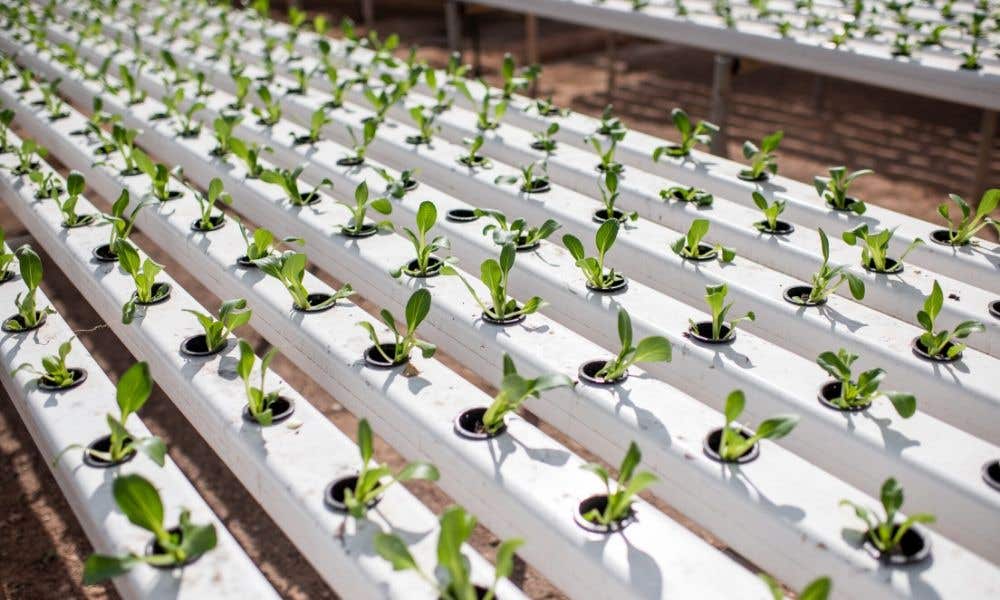
Step 1: Assess Your Space
The first step in choosing a hydroponic system is to consider the space you have available. Whether it’s a small countertop or an entire room, make sure your chosen system fits comfortably without overcrowding. Proper space ensures optimal plant growth and maintenance.
Step 2: Know Your Plants
Different hydroponic systems cater to specific types of plants. Research the requirements of the plants you want to grow. For instance, leafy greens thrive in a nutrient film technique (NFT) system, while larger plants like tomatoes or cucumbers prefer deep water culture (DWC). Match your system to your plants for the best results.
Step 3: Set Your Budget
Consider your budget when selecting a hydroponic system. Costs vary based on size and complexity. Factor in long-term expenses like maintenance and nutrient solutions. While advanced systems offer extra features, beginners can start with simpler, budget-friendly options. Prioritize essentials and invest wisely in your hydroponic journey.
By considering these factors – available space, plant requirements, and budget – you can confidently choose a hydroponic system that is right for you as a beginner.
Essential Tools and Equipment for Hydroponic Gardening
Hydroponic gardening is a rewarding and efficient way to grow plants without soil. To ensure the success of your hydroponic garden, it is essential to have the right tools and equipment. Here are some key items that every hydroponic gardener should have:
1. Grow Trays: These are used to hold the plants and their growing media, such as perlite or rockwool. Grow trays come in various sizes and materials, such as plastic or metal, to suit different types of hydroponic systems.
2. Nutrient Reservoir: This is a container where the nutrient solution is mixed and stored. It should be lightproof to prevent the growth of algae and equipped with a lid or cover to maintain cleanliness.
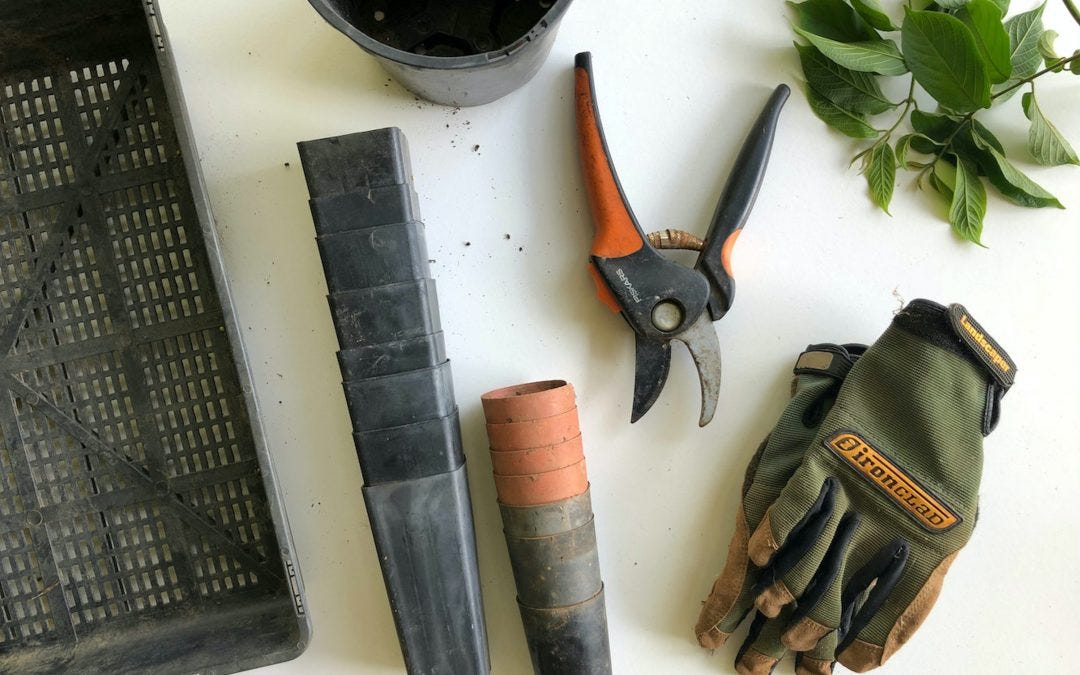
3. pH and EC Meters: These tools are crucial for monitoring the pH levels and electrical conductivity (EC) of the nutrient solution. Maintaining the proper balance of pH and EC ensures optimal nutrient uptake by the plants.
4. Water Pumps: Hydroponic systems rely on water pumps to circulate the nutrient solution and provide oxygen to the plant roots. Choose a pump that is appropriate for your system’s size and flow requirements.
5. Grow Lights: Since hydroponic gardens are often grown indoors or in areas with limited natural light, providing artificial lighting is necessary. LED or fluorescent lights are commonly used to simulate sunlight for plant growth.
6. Timer: A timer helps automate the lighting and watering cycles in your hydroponic garden. This allows for precise control over the duration and frequency of light exposure and nutrient delivery to the plants.
Remember that these are just a few of the essential tools and equipment needed for hydroponic gardening. As you delve deeper into the world of hydroponics, you may discover other specialized tools and systems that can enhance your gardening experience.
The Burpee SuperSeed Grow Trays have been an essential tool in my seed starting process. Their deep-root system has significantly improved the health and vigor of my seedlings, allowing them to develop strong root systems for transplanting into the garden. I appreciate the trays’ dishwasher-safe feature, which makes cleaning and sanitizing them a breeze, ensuring a hygienic environment for my plants. Additionally, their sturdy construction gives me confidence that they will withstand multiple uses without warping or cracking, providing long-lasting value.
However, I did encounter some limitations with the tray sizes, which restricted the variety of plants I could grow simultaneously. Additionally, while the plastic material is durable, I would have preferred more environmentally friendly options, such as biodegradable materials. Despite these minor drawbacks, the Burpee SuperSeed Grow Trays have proven to be a reliable and efficient solution for starting seeds indoors. Their efficient design, compatibility with standard seed starting kits, and versatility in use make them a valuable addition to any gardener’s toolkit, especially for those looking to kickstart their vegetable garden with healthy seedlings.
- Deep-Root System: The grow trays feature a deep-root system that promotes healthy root growth, allowing plants to develop strong and robust root systems for optimal nutrient absorption.
- Dishwasher Safe: The trays are dishwasher safe, making them easy to clean and reuse, reducing waste and providing convenience for gardeners.
- Vegetable Seed Starter: Designed specifically for vegetable seed starting, the trays provide an ideal environment for germination and early growth, giving seeds a strong start before transplanting.
- Sturdy Construction: Made from durable materials, the trays are sturdy and long-lasting, withstanding regular use and handling without warping or cracking.
- Multiple Uses: While primarily used for seed starting, the trays can also be used for growing microgreens, herbs, or small plants, adding versatility to their functionality.
- Efficient Design: The design of the trays optimizes space and airflow, ensuring proper drainage and ventilation for healthy plant growth.
- Compatibility: The trays are compatible with standard seed starting kits and greenhouse systems, allowing for seamless integration into existing gardening setups.
- Limited Size Options: The trays may be available in limited size options, restricting the variety of plants that can be grown simultaneously or the flexibility in arranging seedlings.
- Plastic Material: Some gardeners may prefer trays made from alternative materials, such as biodegradable or recycled materials, for environmental reasons.
- Price: Depending on individual budgets and preferences, the cost of the grow trays may be considered a drawback compared to other seed starting options.
- Shallow Depth: Despite the deep-root system, the trays may have a shallow depth compared to traditional seed starting containers, potentially limiting root growth for certain plant varieties.
- Drainage Holes: While necessary for proper drainage, the drainage holes in the trays may allow soil or water to escape if not placed on a waterproof surface, leading to potential mess or water damage.
- Compatibility Issues: The trays may not be compatible with all types of growing media or seed starting methods, requiring experimentation or adaptation to achieve optimal results.
- Potential Overwatering: Due to the deep-root system and efficient drainage, there is a risk of overwatering if not monitored closely, which can lead to root rot or other moisture-related issues.
Tips for Setting Up Your Hydroponic Garden
Setting up a hydroponic garden can be a rewarding and fulfilling experience, allowing you to grow plants without the need for traditional soil. However, it’s essential to follow the right steps to ensure success. Here are some tips to help you set up your hydroponic garden effectively:
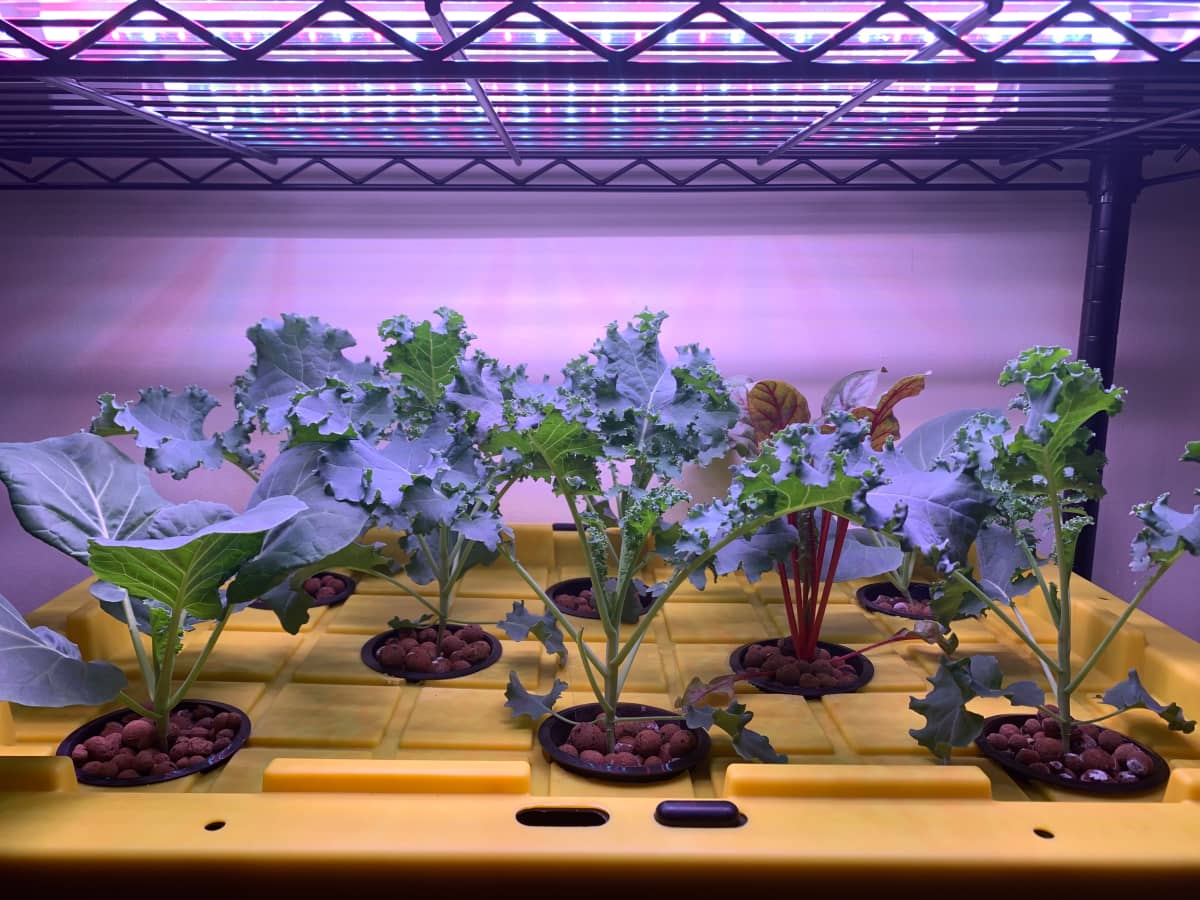
1. Choose the right system:
- When starting out, it’s important to select a hydroponic system that suits your needs and skill level.
- There are various options available, such as nutrient film technique (NFT), deep-water culture (DWC), and ebb and flow systems.
- Consider factors like space availability, the number of plants you want to grow, and your budget.
- Research each system and determine which one aligns with your gardening goals.
2. Prepare your space:
- Before setting up your hydroponic garden, prepare a suitable area for it.
- Look for a clean, well-ventilated space with access to electricity and water.
- Ensure that the area is free from pests, excessive heat, and direct sunlight.
- You may need to install reflective material on the walls to maximize light absorption and distribution.
By following these tips, you will be well on your way to creating a thriving hydroponic garden. Stay tuned for the next section, where we will discuss selecting the perfect location for your hydroponic setup.
Selecting the Perfect Location for Your Hydroponic Setup
When selecting the perfect location for your hydroponic setup, there are several key factors to consider.
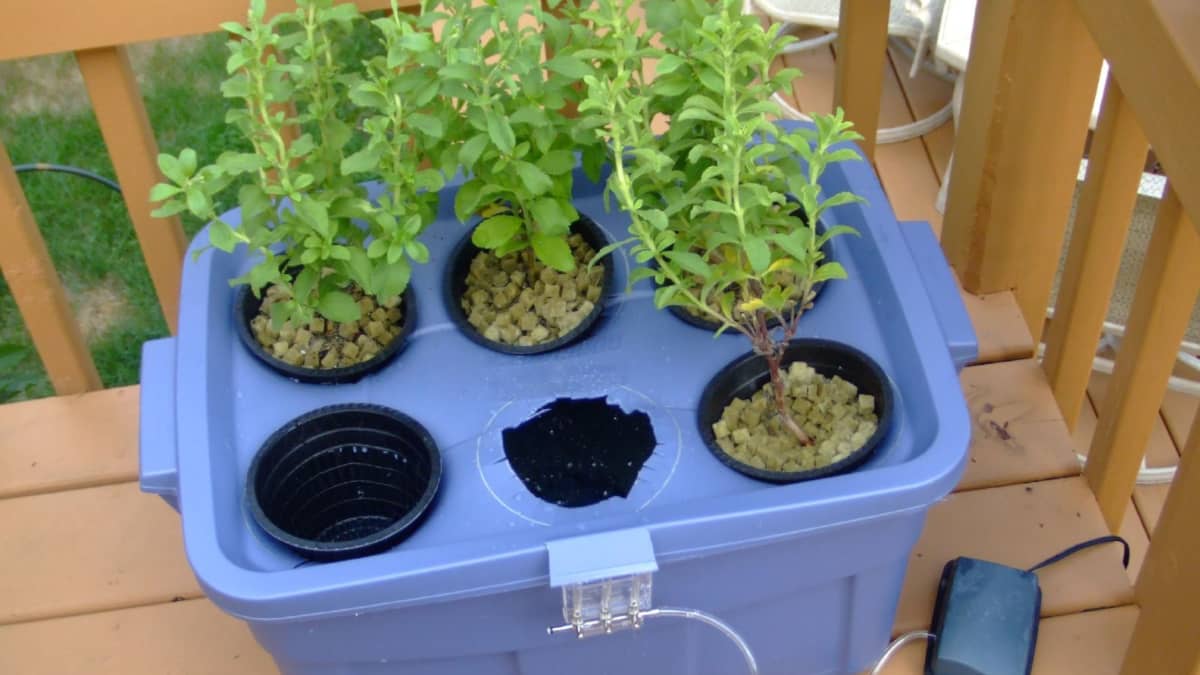
Paying attention to these key factors when selecting the perfect location for your hydroponic setup will set the stage for a successful and thriving garden. With ample sunlight, proper ventilation, and easy access to water and electricity, you’ll be well on your way to creating a productive hydroponic garden that will yield bountiful harvests.
Nutrient Solutions: The Key to Successful Hydroponic Gardening
Nutrient solutions are at the heart of successful hydroponic gardening. These solutions provide the essential elements that plants need to grow and thrive. Unlike traditional soil-based gardening, where plants obtain nutrients from the soil, hydroponic systems rely on nutrient solutions to deliver a balanced blend of minerals directly to the plant roots.
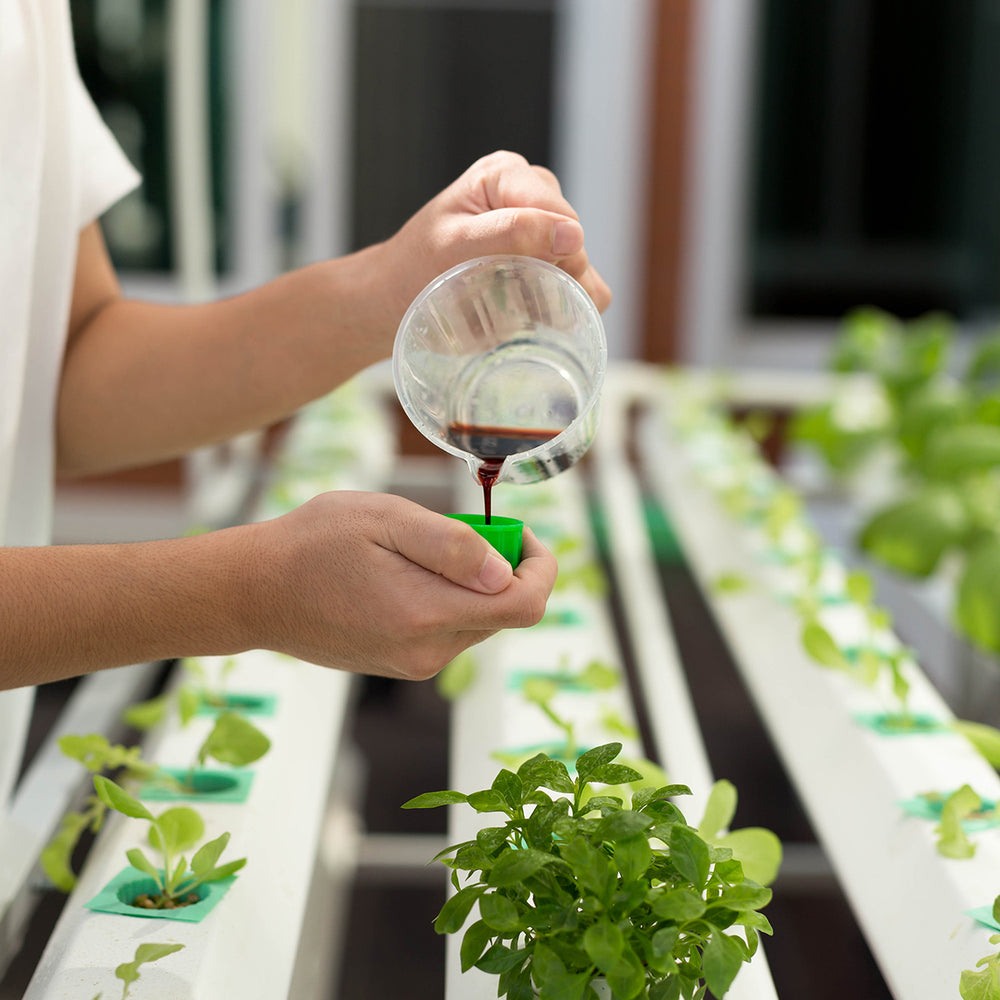
- Macronutrients:
- Nitrogen (N): Vital for leafy growth, chlorophyll production, and overall plant vigor.
- Phosphorus (P): Supports root development, flowering, and fruiting.
- Potassium (K): Essential for enzyme activation, water regulation, and disease resistance.
- Micronutrients:
- Iron (Fe): Crucial for chlorophyll synthesis and preventing yellowing (iron deficiency).
- Magnesium (Mg): A component of chlorophyll, promoting photosynthesis.
- Zinc (Zn): Involved in enzyme function and overall plant health.
- Nutrient Solution Preparation:
- Dissolving Nutrients: Mix water-soluble fertilizers (hydroponic nutrients) in water. Follow manufacturer guidelines for ratios.
- pH Adjustment: Maintain pH between 5.5 and 6.5 for optimal nutrient uptake. Use pH buffers to adjust if needed.
- Electrical Conductivity (EC): Measure EC to ensure proper nutrient concentration. Adjust as necessary.
- Monitoring and Adjustments:
- Regular Testing: Check nutrient levels weekly. Use EC meters and pH meters.
- Visual Symptoms: Observe plant health. Yellowing leaves, stunted growth, or leaf discoloration may indicate deficiencies.
- Addressing Imbalances: Adjust nutrient ratios based on plant stage (e.g., more phosphorus during flowering).
- Plant-Specific Needs:
- Tomatoes: High potassium for fruiting.
- Lettuce: Balanced NPK for leafy growth.
- Strawberries: Adequate phosphorus and potassium.
Remember, a well-balanced nutrient solution ensures healthy, thriving hydroponic plants. Happy growing! 🌱🌿🌼 .
The “Nutrient Solution Calculation and Formulation for Hydroponics” book has been an invaluable resource in my hydroponic gardening journey. Its detailed guidance on calculating and formulating nutrient solutions has empowered me to tailor the nutritional needs of my plants precisely. By understanding the specific requirements of different plant varieties and growth stages, I’ve been able to customize nutrient solutions that promote robust growth and optimal yields.
However, I found the process of nutrient solution formulation to be quite complex, requiring a deep understanding of chemistry and plant nutrition. Additionally, achieving the perfect nutrient balance often involved trial and error, leading to some initial setbacks. Despite these challenges, the knowledge gained from this book has been immensely rewarding, allowing me to cultivate healthy, thriving plants in my hydroponic system.
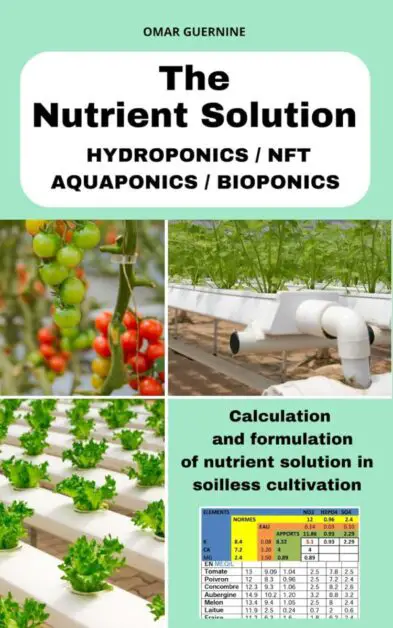
✅ Customization: Readers can tailor nutrient solutions to meet the specific needs of their plants and growing conditions, maximizing yields and minimizing nutrient deficiencies.
✅ Cost Savings: By learning how to formulate nutrient solutions at home, growers can save money compared to purchasing pre-made solutions, especially for large-scale hydroponic operations.
✅ Educational Resource: The book serves as an educational resource, empowering growers with the knowledge and skills to understand the nutritional requirements of plants and how to address them through nutrient solution formulation.
✅ Versatility: The information provided in the book can be applied to various hydroponic systems and plant types, making it suitable for a wide range of growers, from hobbyists to commercial producers.
✅ Sustainability: Homemade nutrient solutions can be made using environmentally friendly ingredients, reducing the reliance on synthetic fertilizers and minimizing environmental impact.
❌ Trial and Error: Achieving the ideal nutrient balance may require experimentation and adjustment, leading to potential setbacks or nutrient imbalances until the optimal formulation is achieved.
❌ Time-Consuming: The process of calculating and preparing nutrient solutions from scratch may be time-consuming, especially for growers with limited time or resources.
❌ Equipment Needs: Formulating nutrient solutions at home may require specialized equipment, such as scales and measuring tools, which could be an additional investment for some growers.
❌ Risk of Errors: Incorrect formulation of nutrient solutions could lead to nutrient imbalances, nutrient deficiencies, or nutrient toxicity, impacting plant health and productivity.
❌ Learning Curve: Mastering the art of nutrient solution formulation may require a steep learning curve, with growers needing to invest time and effort into understanding the principles and techniques involved.
Maintaining pH Levels in Your Hydroponic System
Maintaining the proper pH levels in your hydroponic system is crucial for the health and growth of your plants. pH, which stands for “potential of hydrogen,” refers to the acidity or alkalinity of the nutrient solution in your hydroponic setup. The ideal pH range for most hydroponic plants is between 5.5 and 6.5, allowing for optimal nutrient uptake.
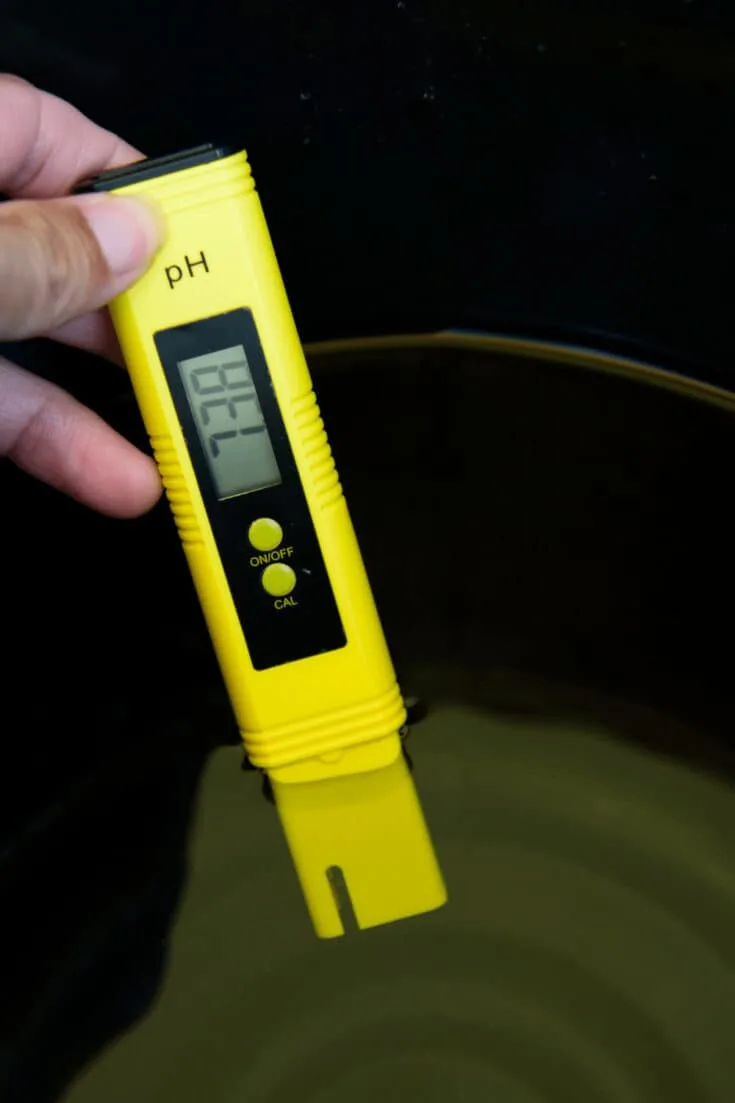
Equipment: Obtain a pH testing kit or a digital pH meter.
Frequency: Regularly test the pH of your nutrient solution (ideally weekly).
Target Range: Aim for a pH range of 5.5 to 6.5 for most hydroponic crops.
Alkaline Solution: Add a small amount of an alkaline substance (e.g., potassium hydroxide or potassium bicarbonate) to raise pH.
Nutrient Ratio: Adjust the nutrient solution by altering the ratio of macronutrients (NPK) to influence pH.
Acidic Substances: To lower pH, use acidic substances like phosphoric acid, citric acid, or vinegar.
Gradual Changes: Make adjustments gradually to avoid shocking the plants.
By meticulously maintaining the pH levels in your hydroponic system, you are ensuring that your plants can effectively absorb the necessary nutrients, promoting healthy growth and maximizing your yields.
Lighting Requirements for Hydroponic Plants
When it comes to hydroponic gardening, providing the correct lighting requirements for your plants is crucial to their overall growth and development. Unlike traditional soil-based gardening, hydroponic plants rely solely on artificial light sources. The right lighting setup not only ensures that your plants receive the necessary light energy for photosynthesis, but it also influences their growth patterns, flowering, and fruiting.
_fmt.png)
- Light Source Selection: Choose between fluorescent and LED lights based on factors such as affordability, spectrum of light emitted, energy efficiency, and lifespan.
- Light Intensity and Duration: Aim for a light intensity of 200-400 micromoles per square meter per second, adjusting the duration of light exposure according to the specific needs of your plants.
- Positioning of Lights: Avoid placing lights too close to plants to prevent heat stress or leaf burn, but ensure they’re not too far away to provide sufficient light to all parts of the plant.
- Ideal Distance: Position fluorescent lights 6-12 inches above seedlings or young plants, and LED lights slightly closer at around 12-24 inches, considering factors like light type and growth stage.
- Consistent Lighting Schedule: Plants require both periods of darkness and periods of light for optimal growth. It is recommended to provide between 14-18 hours of continuous light during vegetative growth stages, followed by 10-12 hours during flowering stages. Maintain a regular lighting schedule with periods of darkness and light, using timers or automated systems to ensure consistency.
- Monitor Plant Response: Regularly observe plant health, leaf color, stem elongation, flowering, and fruiting patterns to gauge the effectiveness of the lighting setup and make necessary adjustments.
Providing adequate lighting requirements for hydroponic plants plays a pivotal role in their success and productivity. By selecting the right type of lighting, adjusting intensity and duration, positioning lights correctly, maintaining a consistent schedule, and monitoring plant response, you can create an optimal growing environment that promotes healthy growth and maximizes yields.
Temperature and Humidity Control in Hydroponic Gardens
Temperature and humidity control are crucial factors to consider when it comes to maintaining a successful hydroponic garden. The ideal temperature for most hydroponic plants falls within a range of 65 to 75°F (18 to 24°C). Temperatures outside of this range can negatively impact plant growth and development.
thermostat-controlled heating and cooling system
One way to ensure a stable temperature is by using a thermostat-controlled heating and cooling system.
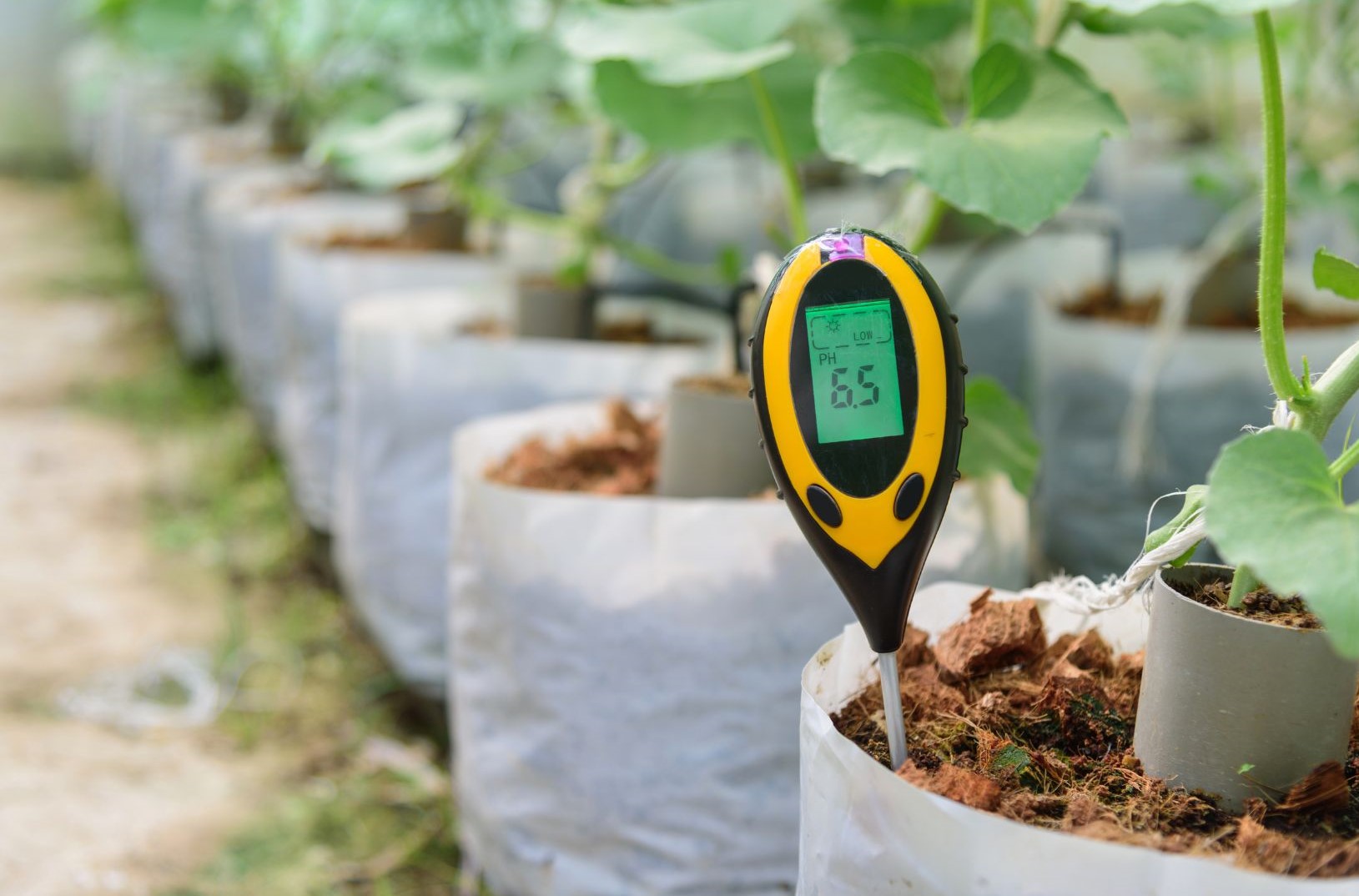
- This will help maintain a consistent climate, especially during the colder winter months or hot summer days.
- Additionally, monitoring the humidity levels is equally important.
- The ideal humidity range for hydroponic gardens typically falls between 40% to 60%.
- If the humidity levels are too high, it can lead to mold, rot, and other fungal issues.
- On the other hand, low humidity can cause plant stress and hinder nutrient uptake.
- To achieve the appropriate humidity, utilizing a dehumidifier or humidifier, depending on the circumstance, can help maintain optimal conditions for your plants.
Pest and Disease Management in Hydroponics
Pest and disease management is a crucial aspect of hydroponic gardening, as the controlled environment can sometimes create a conducive breeding ground for these unwanted visitors. However, with the right strategies and preventive measures, you can effectively minimize the risk and keep your plants healthy and thriving.
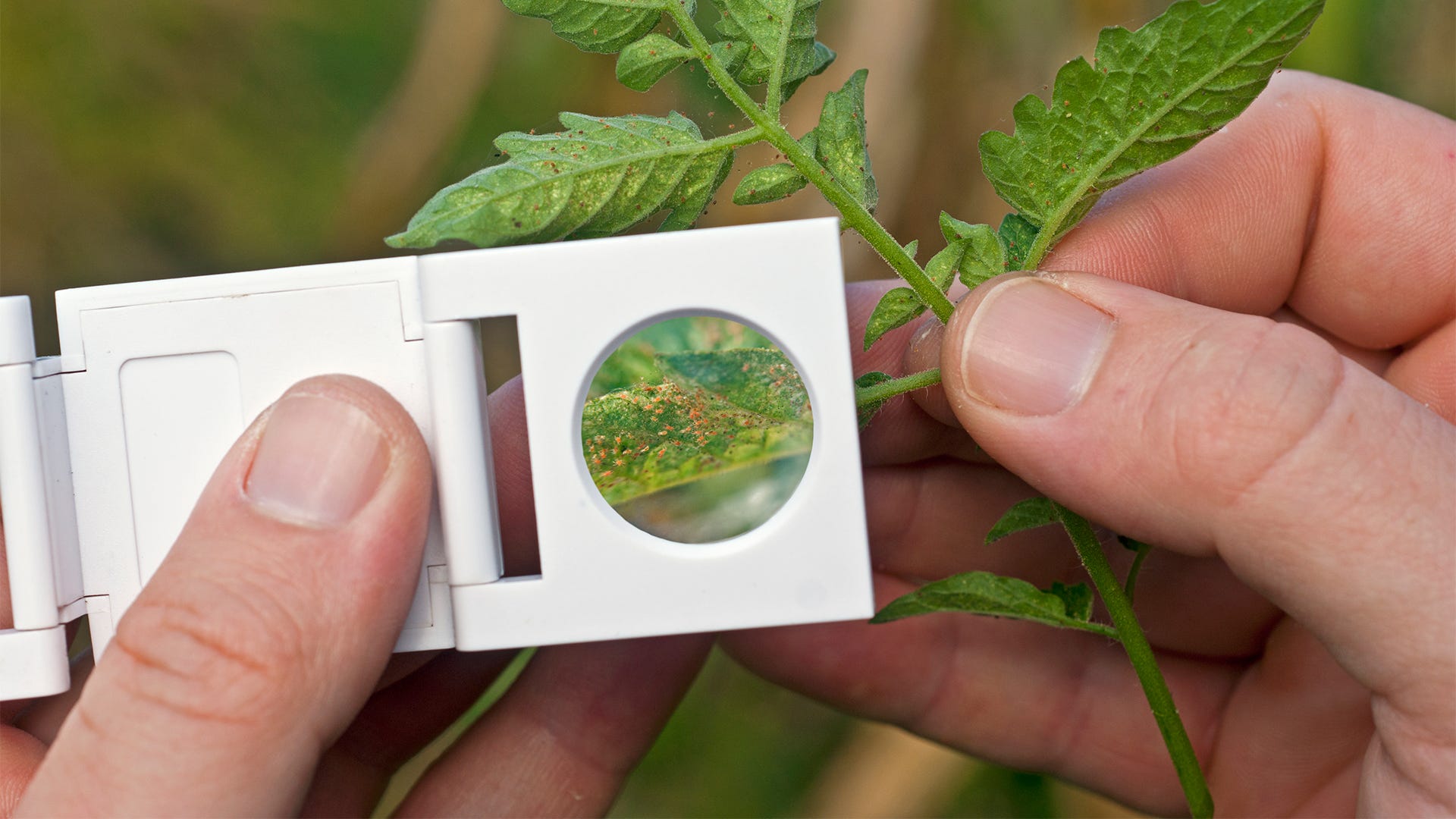
- Maintain Cleanliness: Regularly clean and disinfect your hydroponic system components, including reservoirs, pipes, and grow trays, to eliminate potential breeding grounds for pests and pathogens.
- Practice Good Hygiene: Keep hands and gardening tools clean to prevent the introduction and spread of pests and diseases.
- Monitor Regularly: Conduct routine inspections of your plants for signs of pests or diseases, such as wilting, discoloration, or abnormal growth.
- Early Detection: Act swiftly upon detecting any issues to prevent further spread. This may involve removing and isolating affected plants, employing organic pest control methods, introducing beneficial insects, and applying suitable disease control measures.
By implementing these practices and staying proactive in pest and disease management, you can ensure the health and vitality of your hydroponic garden. Remember that prevention is key, so regular maintenance, cleanliness, and vigilance are essential in minimizing the risk of pests and diseases. Stay tuned for our upcoming article on pruning and training techniques for hydroponic plants, which will further enhance your gardening skills!
Pruning and Training Techniques for Hydroponic Plants
Pruning and training techniques are essential to ensure the healthy growth and optimal productivity of hydroponic plants. By selectively removing unwanted parts and guiding the plants’ growth, gardeners can shape their plants to maximize yields and overall plant health.
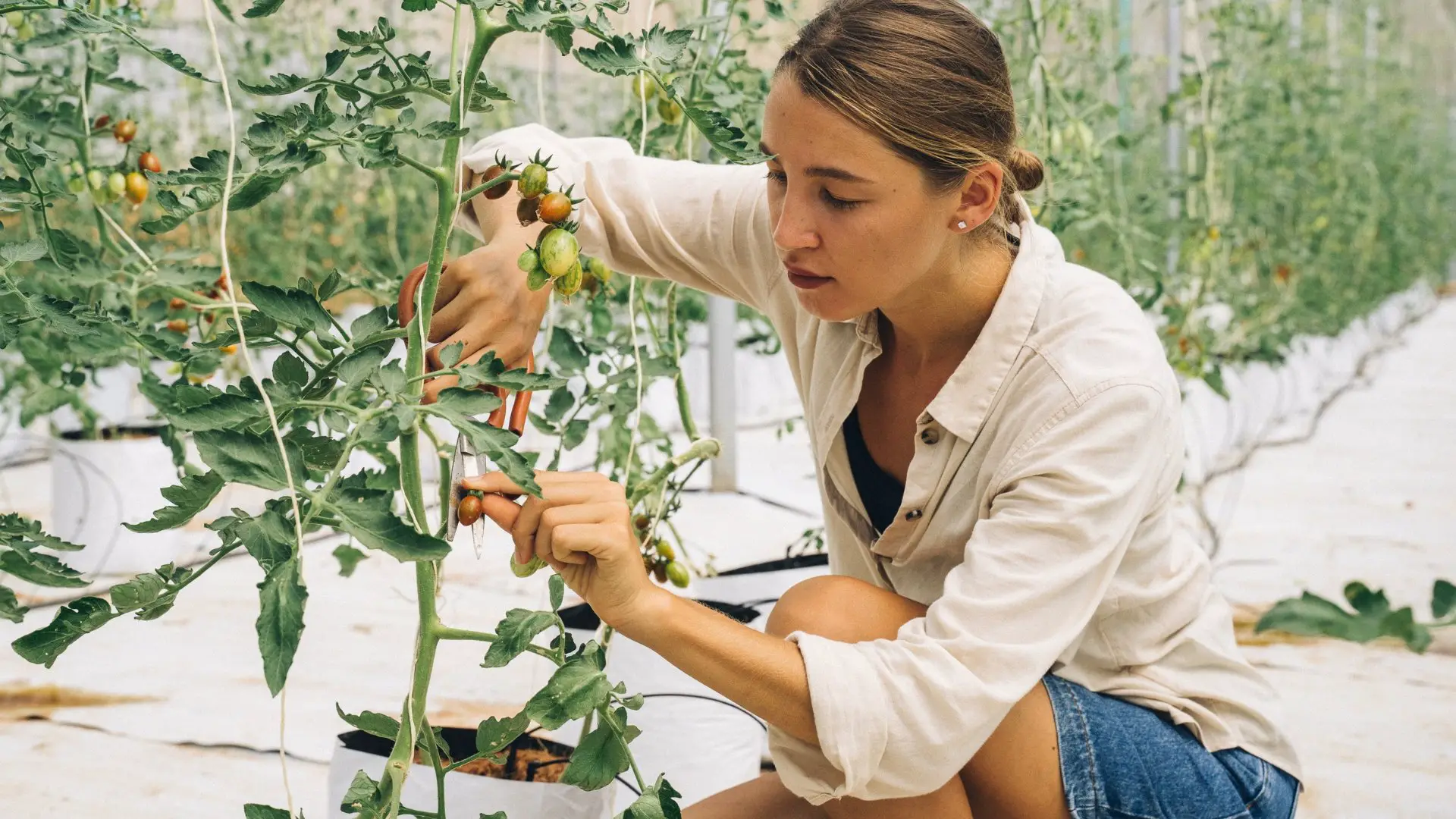
- Pruning:
- Purpose: Remove damaged or diseased plant parts.
- Benefits:
- Health: Prevent disease spread.
- Aesthetics: Improve overall appearance.
- Air and Light: Enhance circulation and light penetration.
- Action: Regularly trim dead or yellowing leaves.
- Training Techniques:
- Topping: Remove the terminal bud to encourage branching and more flowering sites.
- Low Stress Training (LST): Gently bend stems to create an even canopy.
- Screen of Green (SCROG): Use a screen to spread out growth and optimize light distribution.
- Benefits: Productive canopy, especially in limited vertical space.
Remember, a well-pruned and strategically trained hydroponic garden leads to healthier, more productive plants! 🌱🌿🌼 .
Watering Techniques for Hydroponic Gardens
Watering is a critical aspect of hydroponic gardening that requires precision and careful attention. Unlike traditional soil-based gardening, where plants obtain water from the surrounding soil, hydroponic plants rely solely on water and nutrient solutions to thrive. Proper watering techniques are essential to ensure optimal growth, healthy roots, and nutrient uptake.

- Timed Watering Systems: Employ drip irrigation or flood and drain systems to deliver water and nutrients to plant roots at scheduled intervals.
- Drip Irrigation: Slowly applies water directly to the base of each plant for precise control over water delivery.
- Flood and Drain Systems: Periodically flood the growing medium with nutrient-rich water, allowing it to drain away to prevent waterlogging and ensure adequate oxygenation of the root zone.
- pH Regulation: Maintain the correct pH levels of the nutrient solution (usually between 5.5 and 6.5) to facilitate proper water uptake by plants. Regular testing and adjustment using pH meters or test strips are essential.
- Watering Frequency and Duration: Balance watering to provide enough moisture for hydration without causing waterlogging, root diseases, or oxygen deprivation. Consider factors such as plant size, growth stage, and environmental conditions. Monitor moisture levels and observe plants for signs of water stress to guide watering decisions.
In conclusion, proper watering techniques are essential for the success of hydroponic gardens. Employing timed systems such as drip irrigation or flood and drain systems, monitoring and adjusting pH levels, and maintaining appropriate watering frequency and duration are key factors in promoting healthy growth and maximizing crop yield in a hydroponic setting.
Understanding the Growth Stages of Hydroponic Plants
Hydroponic plants go through several distinct growth stages, each with its own unique requirements and characteristics. Understanding these stages is crucial for successful hydroponic gardening and optimizing plant growth.

- Germination Stage: Seeds absorb water and sprout, initiating the growth process.
- Seedling Stage: Plant develops first true leaves and establishes root system. Provide adequate light, moisture, and nutrients for healthy growth.
- Vegetative Stage: Plant focuses on leaf and stem development, requiring intense light, balanced nutrients, and optimal temperature and humidity. Continues to grow and increase in size.
- Flowering Stage: Plant begins producing flowers. Adjust light cycle to simulate natural conditions (typically 12 hours light, 12 hours darkness). Increase phosphorus and potassium nutrients to support flower and fruit development.
Understanding and appropriately managing the growth stages of hydroponic plants is critical for maximizing yields and achieving optimal plant health. With careful attention to light, nutrient solutions, and environmental conditions, you can ensure that your hydroponic garden thrives at every stage of growth.
A Guide to Seed Selection for Hydroponic Gardening
When it comes to hydroponic gardening, selecting the right seeds is crucial for ensuring successful growth and abundant yields. The first consideration in seed selection is the plant variety.
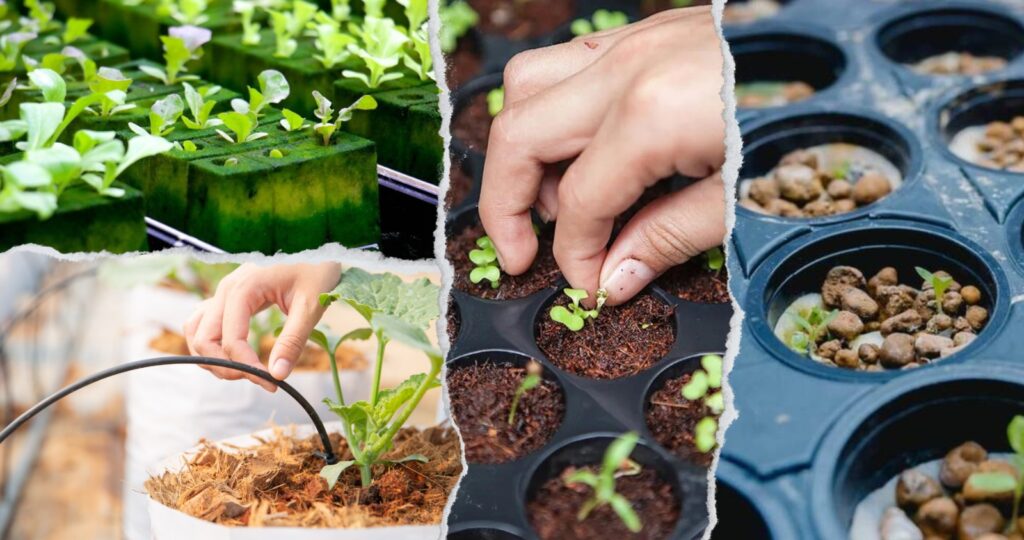
- Leafy Greens:
- Lettuce: Varieties like butterhead, romaine, and leaf lettuce thrive in hydroponic systems. They grow quickly and can be harvested at various stages.
- Spinach: Spinach is rich in nutrients and adapts well to hydroponics. Harvest young leaves for salads or wait for larger leaves for cooking.
- Kale: Nutrient-dense kale is a great choice. Regular harvesting encourages new growth.
- Herbs:
- Basil: Aromatic basil grows beautifully in hydroponics. Its fresh leaves are perfect for pesto, salads, and garnishes.
- Cilantro (Coriander): Cilantro adds a zesty flavor to dishes. Harvest the leaves when they’re lush and green.
- Mint: Mint thrives in hydroponic setups. Use it for teas, cocktails, or as a refreshing garnish.
- Fruiting Crops:
- Tomatoes: Cherry tomatoes or compact varieties work well. Support the plants with stakes or trellises.
- Strawberries: These delightful berries can be grown vertically in hydroponic towers. Sweet, juicy strawberries await!
- Peppers: Bell peppers and chili peppers flourish in hydroponics. Harvest when they reach their desired color and size.
Choosing the Right Seeds:
- Look for seeds labeled as “hydroponic” or “indoor” seeds. These have been specifically bred for soil-less environments.
- Benefits of hydroponic seeds:
- Adaptability: They thrive without soil, adapting to nutrient-rich water.
- Germination: Hydroponic seeds often have higher germination rates.
- Disease Resistance: They’re less susceptible to soil-borne diseases.
- Nutrient Optimization: These seeds are optimized for hydroponic nutrient solutions.
Remember to explore seed catalogs or reputable suppliers for a diverse selection of hydroponic seeds. Happy growing! 🌱🌿🍅🍓.
Best Practices for Transplanting Seedlings in Hydroponics
Transplanting seedlings in hydroponics is a crucial step in the growth process of your plants. It involves moving young plants from their initial growing medium to a new system that will provide them with the necessary nutrients and environment for continued growth. Here are some best practices to ensure successful transplanting in hydroponics.

- Timing: Wait until seedlings have developed a strong root system and at least two to three sets of true leaves before transplanting to minimize stress.
- Handle with Care: Be gentle when handling seedlings to avoid damaging delicate roots.
- Transplanting Process: Remove seedlings from their original growing medium and place them into the new hydroponic system.
- Ensure Proper Coverage: Make sure roots are adequately covered with the growing medium in the new system to provide support and stability.
By following these best practices, you can help your seedlings make a successful transition into their new hydroponic environment, setting the stage for healthy and vigorous growth.
Harvesting and Storage of Hydroponically Grown Plants
Harvesting and storing hydroponically grown plants are crucial steps in the process of hydroponic gardening. By following proper techniques, you can maximize the quality and shelf life of your harvested produce.

- Harvesting:
- Timing Matters: Different plant species have distinct maturity stages. Harvest them at the right time to maximize flavor, texture, and nutrient content.
- Leafy Greens: Harvest leafy greens (like lettuce, spinach, and kale) when they reach the desired size. Younger leaves tend to be more tender.
- Fruiting Plants: For fruiting plants (such as tomatoes, peppers, and strawberries), wait until the fruits are fully ripe. They should exhibit vibrant color and be easy to detach from the plant.
- Clean Tools: Use clean, sanitized tools (such as scissors or pruning shears) to avoid contamination and damage.
- Gentle Removal: Gently remove the plants from the hydroponic system to prevent stress or shock.
- Storage:
- Airtight Containers: Store harvested produce in airtight containers or plastic bags. This helps retain moisture and prevents wilting.
- Cool and Dark Place: Find a cool, dark storage spot (like a pantry or refrigerator) to prolong shelf life.
- Plant-Specific Guidelines: Each plant has specific storage requirements. Consult reliable sources or plant-specific guidelines for precise recommendations.
Ensuring proper harvesting and storage practices will not only preserve the quality of your hydroponically grown plants, but also allow you to enjoy the fruits of your labor for an extended period of time. With attention to detail and a bit of preparation, you can savor the flavors of your hydroponic harvest long after it has been gathered.
Troubleshooting Common Issues in Hydroponic Gardening
Hydroponic gardening offers many advantages, but like any other gardening method, it comes with its fair share of challenges. As a hydroponic gardener, you may encounter several common issues that can hinder the growth and productivity of your plants. However, with some troubleshooting and proper management techniques, these issues can be addressed effectively.
Troubleshooting Common Issues in Hydroponic Gardening
| Issue | Possible Causes | Solutions | Symptoms |
|---|---|---|---|
| Nutrient Deficiencies | – Incorrect pH Levels: pH affecting nutrient uptake.- Inadequate Nutrient Solution: Insufficient nutrients.- EC Levels Too Low: Electrical conductivity (EC) is too low. | – Adjust pH to the optimal range for nutrient absorption.- Ensure a well-balanced nutrient solution with proper concentrations.- Monitor and adjust EC levels to meet the plant’s requirements. | – Yellowing or discoloration of leaves.- Stunted growth or slow development.- Leaf curling or distortion. |
| Root Issues | – Root Rot: Excessive moisture or poor aeration leading to root diseases.- Nutrient Imbalances: Discrepancies in nutrient ratios affecting root health.- Temperature Fluctuations: Extreme temperature changes impacting root function. | – Improve drainage, maintain proper aeration, and use sterile growing media.- Adjust nutrient solution for a balanced nutrient profile.- Maintain stable temperatures within the optimal range. | – Wilting or drooping leaves.- Brown or mushy roots.- Reduced root mass or decay. |
| Algae Growth | – Excessive Light Exposure: Algae thriving due to prolonged light exposure.- Nutrient Solution Contamination: Presence of organic matter encouraging algae growth.- Inadequate System Covers: Lack of covers allowing light penetration. | – Shield hydroponic systems from excess light or implement light-blocking materials.- Regularly clean and sterilize hydroponic system components.- Cover nutrient solutions to prevent direct light exposure. | – Green slimy growth on surfaces.- Foul odor in the hydroponic system.- Reduced oxygen levels in the water. |
| pH Fluctuations | – Inconsistent pH Monitoring: Infrequent checking and adjustments.- Poor Quality pH Adjusters: Low-quality pH adjustment products.- Alkalinity or Acidity of Water Source: Water source impacting pH stability. | – Regularly monitor pH levels and make timely adjustments.- Use high-quality pH adjusters for accurate and stable corrections.- Select a stable water source or pre-adjust water before adding to the system. | – Fluctuating pH readings over time.- Nutrient lockout or deficiency symptoms.- Poor overall plant health. |
| Pests and Diseases | – Contaminated Equipment: Introduction of pests through contaminated equipment.- Lack of Biological Controls: Absence of beneficial organisms for pest control.- Poor Quarantine Practices: New plants introduced without proper quarantine. | – Implement strict hygiene measures and regularly clean system components.- Introduce biological controls like predatory insects or nematodes.- Quarantine new plants before introducing them to the hydroponic system. | – Visible pests such as aphids, mites, or whiteflies.- Yellowing or distorted leaves.- Stunted growth or wilting. |
| Poor Plant Growth | – Inadequate Light: Insufficient light for photosynthesis.- Nutrient Imbalances: Incorrect nutrient ratios affecting plant health.- Temperature Extremes: Extreme temperatures impacting growth. | – Provide adequate and appropriate artificial lighting or natural sunlight.- Regularly test and adjust nutrient solution for optimal plant nutrition.- Maintain temperatures within the recommended range for specific plants. | – Slow growth rate or lack of vigor.- Pale or discolored leaves.- Failure to thrive despite adequate care. |
In the next section of the article, we will explore more common issues that hydroponic gardeners face and provide practical solutions to overcome them. By being aware of these challenges and implementing the right strategies, you can ensure a successful and thriving hydroponic garden. Stay tuned for valuable tips and insights to help you troubleshoot and address a range of issues in your hydroponic gardening journey.
Watch video for more information:
FAQ
How do I know if my hydroponic system is working properly?
To ensure your hydroponic system is working properly, check for signs such as the plants’ healthy growth, appropriate nutrient uptake, and proper pH balance. Regular monitoring of water levels, temperature, and humidity can also help identify any issues.
What can cause pH fluctuations in a hydroponic system?
pH fluctuations in a hydroponic system can be caused by factors such as imbalanced nutrient solutions, excessive organic matter decomposition, or the buildup of salts in the water. Regularly testing and adjusting the pH levels can help maintain stability.
Why are my plants not receiving enough light in my hydroponic setup?
Insufficient light in a hydroponic setup can be due to inadequate lighting fixtures, incorrect positioning of the lights, or expired bulbs. Assess the lighting requirements of your plants and ensure proper intensity and duration of light exposure.
How can I control pests and diseases in my hydroponic garden?
Implementing preventive measures such as maintaining a clean and hygienic environment, regularly inspecting plants for signs of pests or diseases, and introducing beneficial insects can help control pests and diseases in hydroponic gardens.
How often should I prune and train my hydroponic plants?
The frequency of pruning and training hydroponic plants depends on the specific plant variety and growth stage. Generally, regular pruning and training should be done to manage plant size, shape, and promote better air circulation.
What is the best watering technique for hydroponic gardens?
The best watering technique for hydroponic gardens is a drip irrigation system that delivers water and nutrients directly to the plant roots. This method ensures efficient water usage and prevents overwatering or underwatering.
How do I select the right seeds for hydroponic gardening?
When selecting seeds for hydroponic gardening, look for varieties that are well-suited for indoor growing, have shorter maturity periods, and are disease-resistant. Pay attention to the seed supplier’s recommendations and choose high-quality seeds.
How should I transplant seedlings in a hydroponic system?
When transplanting seedlings in a hydroponic system, gently remove them from their initial growing medium, rinse the roots, and place them into the hydroponic system carefully. Ensure the roots are adequately covered with the growing medium to provide stability and support.
How should I store hydroponically grown plants after harvesting?
After harvesting hydroponically grown plants, immediately rinse them with clean water to remove any debris or nutrient residue. Drain excess water and store the plants in airtight containers or bags in a cool, dark place like a refrigerator to maintain freshness.
What can I do if I encounter common issues in hydroponic gardening that are not covered in this article?
If you encounter common issues in hydroponic gardening that are not covered in this article, it is recommended to seek advice from experienced hydroponic gardeners, consult reputable online forums, or contact your local agriculture extension office for personalized assistance.

Studied Agricultural Engineering-Plant Protection at University of California, Davis.
Head of Content writing team at Southelmontehydroponics.com

